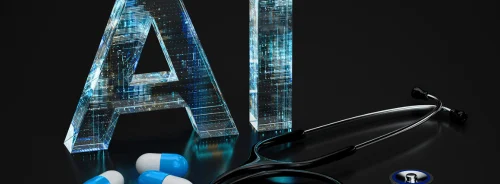Mixed Reality (MR) technology has revolutionised various industries, including healthcare. Particularly in surgical settings, MR offers surgeons new capabilities for visualisation, precision, and training. Integrating digital elements into the physical world, MR technology enables surgeons to access critical information hands-free, improving decision-making during complex procedures. Despite its promise, MR also presents certain challenges, such as the cost of equipment, technical limitations, and the learning curve for medical professionals. This article explores the benefits, current applications, and limitations of Mixed Reality in the operating room (OR) and its potential to transform modern surgical practice.
MR in Surgical Education and Training
One of the most impactful applications of MR in the OR is surgical education and training. MR offers immersive learning environments where medical students and surgeons can practice procedures on virtual 3D models before transitioning to live operations. This hands-on learning method enhances understanding of complex anatomical structures and helps flatten the learning curve for novices, making it easier for trainees to master difficult techniques.
Moreover, MR supports remote mentoring and collaboration. With MR headsets, experts can guide trainees through procedures from remote locations, providing real-time feedback and reducing the need for face-to-face supervision. This setup also benefits healthcare institutions by reducing costs associated with in-person training and mentoring while providing a controlled and safe environment for learning.
However, despite these advantages, adopting MR for surgical training has not been without challenges. Many healthcare professionals, particularly older surgeons, struggle with the steep learning curve associated with using MR devices. Prolonged use of MR headsets can also lead to discomfort and dizziness, making it difficult for surgeons to focus during long sessions. MR's potential to enhance surgical education through immersive experiences cannot be overlooked.
Enhancing Surgical Precision with MR Visualisation Tools
MR technology allows surgeons to overlay 3D models of organs and anatomical structures onto a patient’s body during surgery, enhancing the accuracy and precision of procedures. This ability to visualise complex structures in real-time is invaluable, especially during intricate operations like cardiac or neurosurgery, where precision is critical.
For example, MR can project 3D holographic models of a patient’s anatomy, which the surgeon can interact with through hand gestures or voice commands. These real-time overlays help improve intraoperative navigation, reducing the risk of errors such as misaligned incisions or incorrect placements of surgical instruments. Surgeons can also access essential patient data, such as radiographs or test results, without diverting attention to external monitors, improving both focus and efficiency.
However, the practical application of MR during surgery presents some obstacles. Current MR headsets can be bulky, limiting surgeons' dexterity and movement. Additionally, the accuracy of MR-generated images can be compromised by factors such as patient movement or sensor malfunctions, potentially leading to errors. Another critical issue is the limited field of view offered by most MR devices, which can impede the surgeon’s ability to see the whole operating field. Despite these limitations, continued advancements in MR technology promise to improve surgical outcomes through enhanced visualisation and precision.
MR as a Tool for Collaboration and Remote Assistance
In the highly collaborative OR environment, effective communication between surgeons and their teams is crucial for the success of procedures. MR serves as a powerful tool for real-time collaboration, not only among local surgical teams but also with remote specialists. For instance, a surgeon in one country can receive real-time guidance from an expert halfway across the world, viewing the procedure through the same MR interface. This feature facilitates access to specialised knowledge and expertise, which may otherwise be unavailable in certain locations, thus improving patient outcomes.
In addition to remote assistance, MR provides surgeons with enhanced team communication through shared visualisations. Team members wearing MR headsets can see the same digital information, such as 3D models or patient data, allowing for a more synchronised approach during surgery. This real-time exchange of information ensures that everyone involved in the procedure is on the same page, reducing the likelihood of miscommunication.
Despite its potential, using MR for remote assistance is not without its challenges. One of the most significant barriers is the interoperability of MR systems. Different devices and platforms used by various healthcare providers often do not communicate seamlessly, creating data synchronisation and information-sharing issues. Furthermore, MR systems rely heavily on stable, high-speed internet connections, which may not always be available in all regions. Overcoming these technical and logistical challenges is critical for expanding the use of MR in global surgical collaborations.
Conclusion
Mixed Reality offers transformative potential for the operating room, providing enhanced visualisation, real-time collaboration, and advanced educational tools. The ability to visualise complex anatomical structures, overlay critical data in real-time, and collaborate with remote specialists are just a few of the ways MR is changing the face of modern surgery. However, the widespread adoption of MR in the OR faces significant hurdles, including the high cost of equipment, technical limitations like limited field of view and bulkiness, and the need for extensive training.
Despite these challenges, MR’s benefits far outweigh its current limitations. Integrating MR into surgical practices will likely become more seamless as the technology evolves, reducing surgery times and improving overall patient outcomes. The future of MR in the OR is bright, with the potential to enhance the precision and safety of surgeries and revolutionise how surgeons are trained and collaborate across borders. In the coming years, advancements in MR technology will help address existing challenges, paving the way for widespread healthcare adoption.
Source Credit: Journal of Medical Systems
Image Credit: iStock





